St Bees School
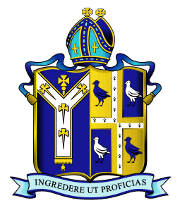 | |
| Motto |
Latin: Ingredere ut proficias (Enter so that you may make progress)[1] |
|---|---|
| Established | 1583 |
| Type | Independent day and boarding |
| Religion | Church of England |
| Headmaster | Gareth Seddon |
| Founder | Archbishop Edmund Grindal |
| Location |
St Bees Cumbria CA27 0DS England 54°29′40″N 3°35′33″W / 54.4944°N 3.5925°WCoordinates: 54°29′40″N 3°35′33″W / 54.4944°N 3.5925°W |
| DfE URN | 112444 Tables |
| Gender | Mixed |
| Ages | 11–18 |
| Houses | Bega, Lonsdale, School, Grindal |
| Publication | "The Pacquet" |
| Former Pupils | Old St. Beghians |
| Website |
www |
St Bees School is a co-educational independent school located in the West Cumbrian village of St Bees which caters for day, full, weekly or flexi-boarders[2]. Founded in 1583 by the then Archbishop of Canterbury Edmund Grindal as a boys' "free grammar school", it was later a member of the Headmasters' and Headmistresses' Conference[3] and was co-educational from 1978.[4]
Location
The school is located on the western coastal fringe of the Lake District UNESCO World Heritage site, a place that provides opportunities for outdoor adventure training activities.[5] Manchester Airport and Newcastle Airport are 140 miles and 90 miles away respectively.
Vision and Mission
Vision[6]: A stimulating, inclusive and safe environment in which every child is valued as an individual, and nurtured to realise their own unique potential.
Mission[7]: To establish St Bees School as a vibrant and sustainable centre for the outstanding education and all round development of young people, in accordance with Archbishop Grindal’s legacy.
Fees
Fees [8] are currently £12,975 pa for Year 7 day pupils. The school offers financial support to a limited number of pupils in the following ways. Pioneer Scholarship, Academic Scholarship, Sports Scholarship and Creative Arts Scholarship. [9]
Academic result
In 2012 the GCSE pass rate (A*-C) was 99.8% and over 65% of the results gained by St Bees’ pupils at A Level were in the A*, A, and B grade categories. [10]
Facilities
St Bees offers external lettings of the Business Management Centre, School’s Swimming Pool and Sports Centre to the local community[11] . St Bees Swimming Pool offers a wide range of activities and swim sessions for all ages.
St Bees School owns a 9 Hole Links Golf Course which was founded in 1929. It offers golfing experience on the western Lake District, with views of St Bees Head, the Isle of Man and the Lakeland Fells[12]. The golf course is within walking distance of the school, thus pupils have many opportunities to develop their golf skills and to play at a range of different levels from beginner to professional.
Curriculum
In lower school, the core curriculum [13] comprises lessons in: Language & Literacy, English (Literature & Language), Chinese, Mind & Body, Creative & Expressive Arts (Art, Music & Drama), Sports, Outdoors & Wellbeing, Our Place in the World, World History, World Geography, Personal Development Programme, Global Perspectives, Enterprise, Faith, Philosophy and Ethics, Health, Process & Analytics, Mathematics, Science (Biology, Chemistry, Physics), Computing, Pastoral Guidance Programme, Personal Tutor Meetings, School Assembly, Chapel Reflection Service [14]
St Bees School Curriculum Support Department is responsible for ensuring that pupil's needs of extra support are fully met. The school provides additional learning support within the mainstream school setting. Students will special needs are admitted on a case-by-case basis. [15]
Creative Arts
The aim of St Bees School is to provide an opportunity for all pupils to have an appreciation of the arts and to experience the benefit of time on stage and behind the scenes.[16] St Bees School offers extra-curricular Music programme led by experienced musicians and teachers that target to create and maintain a balance between excellence and inclusivity. A production is held every half term which includes improvisation, soliloquies, classical performance pieces, musical theatre and short devised pieces. Music features strongly with formal and informal concerts for pupils at every level.[17] The school maximises the opportunity for pupils to perform in assemblies, for parents and on special occasions.[18] Every lower school pupil is a member of the St Bees School Community Choir which performs for the local community on a regular basis.[19] Sacred music is an important part of St Bees School programme.[20]
Sports
A significant proportion of the curriculum is dedicated to activities and all pupils are expected to participate in a core curriculum of sports, outdoor pursuits and elective activities. The main sports offered by St Bees Schools are rugby, squash, hockey, tennis, eton fives, cross country, swimming, golf, football, water sports and netball[21] .
The programme makes full use of the school facilities. On school site alone St Bees offers traditional sports including: rugby, football, netball, tennis, cricket and athletics. There are also facilities to encourage pupils to learn how to play squash, badminton, table tennis and basketball. As St Bees owns a 9-hole golf course, the school is committed to ensuring that all pupils develop a basic understanding of the game and to make provision for pupils who show an aptitude to have specialised coaching and match opportunities. Students will gain much from outdoor learning opportunities and outdoor activities e.g. walking, kayaking, bouldering, climbing, fell running and camping are organised regularly. St Bees School offers the Duke of Edinburgh award and, because of the immense benefits, it is the expected that all pupils will follow the Bronze Award programme with the hope that the pupils will be inspired to follow through to achieve the Silver and prestigious Gold Awards. Pupils with an interest in business are engaged in Enterprise Activities to learn about the challenges and rewards of business life. The final composition of the activities programme will be shaped by the skills, qualifications and competencies of the teaching and support staff[22].
Pastoral
St Bees School pastoral support team provides support for pupils and someone to turn to in day to day life. The school enables pupils to develop self-discipline and reason; courtesy and respect for others; and self-esteem and independence of mind by forming strong relationships and working partnerships with St Bees parents[23]. The whole school community takes part in a weekly service in the school chapel, whose services reflect the Anglican traditions of the UK. St Bees School also offers the opportunity for individuals to consider preparation for confirmation into the Church of England and provision is made for children of all faiths to find a suitable place of worship[24].
Grounds and buildings
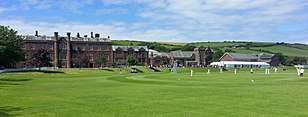
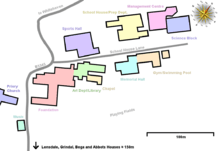
The school grounds occupy some 250 acres (1,000,000 m2) which is a good portion of the village of St Bees, and the oldest buildings date from the late 16th century. The original schoolroom was used as one of the dining rooms before closure, and it is surrounded by the 'Foundation' block, which was mainly built during the mid part of the 19th century. As one moves North East along the valley, the buildings generally get progressively newer, ending with the Science Block and the Management Centre. Most of the buildings are either built with or faced by the distinctive red sandstone which is characteristic of the buildings at the school. School House is located on the main site, but the other boarding houses are all located across the railway tracks to the South - Grindal in a large former hotel, while the other three houses occupy the whole of Londsdale Terrace, a row of houses owned by the school. The school also owns a building just across the road from the main school, which was occupied by the Music Department. The Priory Church was used by the school for major services throughout the year as the chapel was too small.
The buildings around the main quadrangle in the Foundation block are a grade II listed building,[25] granting them additional protections under English law. This includes the original schoolroom on the lower north side of the quad. Lonsdale Terrace is another grade II listed building owned by the school, also built in the mid 19th century.[26] The school did not own, but had use of the former chancel of the Priory Church, which is a grade I listed building, granting additional protection above grade II.[27] The school used this room for orchestra and choir practices.
History
The school has had a long and varied history, which was characterised by periods of prosperity interspersed with periods of difficulty. Although the school had a difficult start due to the Queen initially refusing to sign the letters patent establishing the school, it eventually began to grow, partially due to its ownership of the mineral rights to surrounding land. However, despite selling the mining rights for much less than they were worth and taking part in a resulting legal tussle which lasted for the latter half of the 18th century, the school expanded rapidly throughout the 19th century, building much of the campus as seen today. The school did, however, have to be rescued by former members of the school in 1938 due to a financial crisis caused by a sudden drop in pupil numbers.[28]
In March 2015 it was announced by the School Governors that due to falling pupil numbers and the high cost of their school fees, the school would temporary close and refurbish in Summer 2015.[29] However, in March 2017 it was announced that the school will re-open in September 2018 in a partnership with Full Circle Education Group, a South East Asian education group.[30] Significant investment has put into refurbishing the hestorical buildings. The school is on track to reopen initially with a cohort of Year 7 students to nurture the culture of the school from the ground up.
Founding
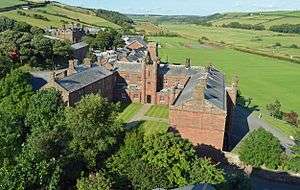
The school was founded in 1583 by the Archbishop of Canterbury, Edmund Grindal, who was born in the village of St Bees at Cross Hill House, which still exists.[31][32] Having fallen out with Queen Elizabeth I, and although ill and blind, he refused to resign his position until the Queen signed the letters patent which would create the Free Grammar School at St Bees. The school was founded in 1583; a few years after Grindal's death. Thanks to his making an agreement with The Queen's College, Oxford and his purchase of local tithes, the school was both financially and academically able to prosper.
Early years
Although specifically incorporated for the education of boys from Cumberland and Westmorland, as early as 1604 people from outside Cumbria were being educated at St. Bees in the original schoolroom (now one of the school dining rooms) near the Priory Church. The school slowly expanded, despite one Headmaster who worked his pupils like labourers. The school had enjoyed some financial security for many years, lessened in 1742 when the school sold Sir James Lowther an eight hundred and sixty-seven year mineral lease for much less than market value.
Modern growth
In the nineteenth century the school started to look like it is now. Thanks to a resolution of the mineral rights issue being obtained through the Court of Chancery in 1842, the school was able to physically expand, with what is now the "Quadrangle" being built, Grindal House (formerly a hotel) purchased and the Headmaster's Residence being constructed. At the turn of the twentieth century the School Chapel was built, along with what is now the Art Department and the School Library, and the swimming baths. By the outbreak of the First World War the school had reached a peak of three hundred pupils, a figure which would not be seen again for some years.
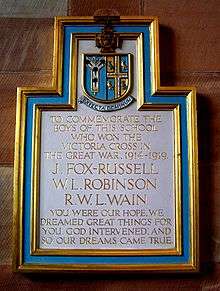
During the Great War three old boys of the school were awarded the Victoria Cross, the highest award for military gallantry in Britain and many of the British Commonwealth countries (see St. Bees V.C. winners for more details. Old boy Alfred Critchley became one of the youngest Brigadier-Generals in the British Empire at the age of twenty-seven for his heroic conduct (he was older than Roland Boys Bradford, V.C. but younger than Bernard Freyberg, V.C.). One hundred and eighty old boys gave their lives during the war, and a special memorial was built overlooking the sports fields where so many had previously played.[33]
After the war the number of students remained high, but in common with many other schools the numbers decreased and then went into free-fall during the 1930s. The situation became so critical that the Governors of the School attempted to have the school nationalised. In the end, the old boys put together a rescue package and the school remained independent,[28] it being the only one of its kind at the time in Cumberland and Westmorland.

In 1938, during the final stages of recovery from the Great Depression, the school's headmaster of the day, George Mallaby, made an unusual career move by becoming District Commissioner for the special area of west Cumberland, with the task of alleviating the problems of unemployment.[34]
During the Second World War Mill Hill School was evacuated to St. Bees after the latter's buildings in London were occupied by the government. The two schools remained independently run, but sports teams from each school would frequently play each other.[35] The cadet corps of the two schools combined with village volunteers to form the St. Bees Home Guard, resulting in the group being much earlier equipped than many other Home Guard groups, as the cadets from both schools already had the necessary equipment.[36]
Post-war expansion
Seventy-two old boys gave their lives during the Seconds World War, and the Memorial Hall was erected in their memory.
During the 1950s a new science block was built, formally opened by Barnes Wallis in 1959,[37] and in the 1970s the school became coeducational. New boarding houses were purchased for both girls and boys, Bega House and Abbot's Court respectively, and to celebrate the school's quatercentenary in 1983 an appeal was launched which would give the school a new sports hall, opened in 1988.
The 1990s saw the opening by Prince Charles of the Whitelaw Building, a multi-function business centre and teaching area which was named after the-then Chairman of the Board of Governors, William Whitelaw. In 2000, Barony House was entirely refurbished and renamed the Fox Music Centre in memory of old St Behgian Bill Fox. To mark the millennium, a time capsule was buried in the North-East corner of the Quadrangle.
In September 2008, a Preparatory Department was launched, catering for pupils from the age of 8 until they joined the main school.[38] At this time, a nearby independent school with a prep department, Harecroft Hall, had just closed.[39] The school again expanded in September 2010 to include pupils from age four.
Temporary Refurbishment
On Friday 13 March 2015, it was announced by the School Governors that due to falling pupil numbers and the cost of their school fees, the school would temporary close in Summer 2015.[40] In response a four-point rescue plan was proposed on the 23rd March by a "rescue team" made up of interested stakeholders.[41]
The plan consisted of....
- 1) Work on a legal mechanism to take control from the current board of governors
- 2) Rescind the current closure notice and replace with a preliminary closure notice to the Summer Term of 2016.
- 3) Use the next nine months to raise funds and to develop a supported and sustainable business plan for the school
- 4) Throughout this period post frequent updates on progress on the website and issue a substantive interim report of progress before the end of the Summer Term. Then by Christmas term 2015 formally confirm or withdraw the preliminary closure notice based on the success of the rescue business plan.[42]
However, on 17 April 2015 it was confirmed by the Governors that the school would close. The formal statement said the governors are also trustees of the St Bees Foundation and they say they are committed to it having a future in education in west Cumbria and "to the use of the site as support both for the future activities of the foundation and the village of St Bees."[43] The school temporarily closed from July 2015, and there are plans to reopen the school in shortly.[44] The last headmaster before closure was James Davies, from September 2012[45] to July 2015.
Re-establishment
On 20 March 2017 it was announced that the school will re-open in September 2018 in a partnership with Full Circle Education Group after the refurbishment.[46] On 5th May 2017 the Trustees announced that the Headteacher Designate would be Jeremy Hallows, who was then Head of the Senior School at Bromsgrove School.[47] In April 2018 it was announced that the school would open initially with a cohort of Year 7 students to nurture the culture of the school from the ground up and to establish organic growth year on year. After a leadership change and the departure of Jeremy Hallows, Gareth Seddon was appointed as Headmaster. The School opened on September 6th 2018. [48]
Old St. Beghians
Former pupils of St. Bees School are styled Old St. Beghians. An "Old St. Beghians' Club" was founded in 1908 by master J.W. Aldous, and today as the Old St. Beghians' Society it provides a link between old boys (and girls) and the school. Amongst other things it organises an "Old St Beghians Day" at the school once a year, publishes a magazine called the Old St. Beghian twice a year( now additionally published online) and holds and participates in many golfing tournaments. There are several regional branches of the society which traditionally hold annual meals and reunions.[49]
Notable Old St. Beghains include two Vice-Chancellors of the University of Cambridge, a number of professors, and three Victoria Cross recipients. In the present era actor Rowan Atkinson[50] is the best-known former pupil.
See also
Citations
- ↑ "St. Bees Village Website - School History". Retrieved 15 April 2012.
- ↑ Boarding School Association
- ↑ "HMC Schools Q-S". Archived from the original on 13 February 2012. Retrieved 2 June 2011.
- ↑ "Independent Schools Inspectorate - St Bees Report" (PDF). Retrieved 29 May 2011.
- ↑ St Bees School Website. Why St Bees?
- ↑ St Bees School Vision And Mission
- ↑ St Bees School Vision And Mission
- ↑ St Bees School UK Fee Schedule 2018-19
- ↑ St Bees School Scholarships And Bursaries
- ↑ Boarding School Association
- ↑ St Bees School Bookings
- ↑ St Bees School Golf
- ↑ St Bees School Lower School Curriculum
- ↑ St Bees School Lower School Curriculum
- ↑ St Bees School Curriculum Support
- ↑ St Bees School Creative Arts
- ↑ St Bees School Curriculum
- ↑ St Bees School Creative Arts
- ↑ St Bees School Curriculum
- ↑ St Bees School Creative Arts
- ↑ St Bees School Sports
- ↑ St Bees School Activities
- ↑ St Bees School. Pastoral
- ↑ St Bees School. Spiritual life
- ↑ "British Listed Buildings - St Bees School Buildings". Retrieved 2 June 2011.
- ↑ "British Listed Buildings - 1-11, St. Bees". Retrieved 2 June 2011.
- ↑ "British Listed Buildings - Music Room in former Chancel to Priory". Retrieved 2 June 2011.
- 1 2 "Future of St.Bees School". The Glasgow Herald. 7 July 1938. Retrieved 31 May 2011.
- ↑ Whitehaven news web site 13th March 2015 Archived 2015-07-22 at the Wayback Machine.
- ↑ Press release from St Bees School trustees. retrieved 20.3.2017
- ↑ "Archbishop Grindal's Birthplace: Cross Hill, St. Bees Cumbria, By John and Mary Todd. Transactions of the Cumberland and Westmorland Antiquarian and Archaeological Society 1999, Vol XCIX.
- ↑ "Veterans look to the future". News and Star. 13 January 2006.
- ↑ Aldous, M.A., J.W. (1921). St. Bees School Roll of Honour and Record of Service. Edinburgh: University Press.
- ↑ Gittings, Robert, 'Mallaby, Sir (Howard) George Charles (1902–1978), public servant and headmaster' in Oxford Dictionary of National Biography, online version (subscription required), accessed 10 August 2008
- ↑ "Poignant last reunion". The Whitehaven News. 23 April 2009. Retrieved 17 April 2012.
- ↑ "Mill Hill School at St Bees". Retrieved 17 April 2012.
- ↑ http://www.st-beghian-society.co.uk/miles/1950-60/1958-59/speech%20day/speech%20day.html
- ↑ "Juniors to join school". The Whitehaven News. 9 July 2008. Retrieved 31 May 2011.
- ↑ "18 jobs lost as school to shut". The Whitehaven News. 23 April 2008. Retrieved 2 June 2011.
- ↑ Whitehaven news web site 13th March 2015 Archived 2015-07-22 at the Wayback Machine.
- ↑ "Rescue St Bees School" website - retrieved 23rd March
- ↑ "Rescue St Bees School" website - retrieved 23rd March
- ↑ West Cumberland News and star Archived 2015-07-22 at the Wayback Machine.
- ↑ https://www.bbc.co.uk/news/uk-england-cumbria-33380943
- ↑ "New Head Appointment". The Old St. Beghian No.181. January 2012. Retrieved 4 September 2012.
- ↑ http://www.chinadaily.com.cn/world/cn_eu/2017-05/25/content_29493559.htm
- ↑ Press release 05.05.2017 by the Trustess of St Bees School
- ↑ https://www.stbeesschool.co.uk/news-and-events/
- ↑ "About the Society (OSB)". Retrieved 17 April 2012.
- ↑ "Chortle Profile - Rowan Atkinson". Retrieved 29 May 2011.
Reference list
- Aldous, M.A., J.W. (1921). St. Bees School Roll of Honour and Record of Service. Edinburgh: University Press.
- Special Committee, Old St. Beghians' Club (1939). The Story of St. Bees 1583-1939: a souvenir of the 350th anniversary of the opening of St. Bees School. London: Buck & Wooton. OCLC 223279332.
- Strype, John (1710, republished 1974). The history of the life and acts of the Most Reverend Father in God, Edmund Grindal: the first Bishop of London, and the Second Archbishop of York and Canterbury successively, in the reign of Queen Elizabeth, to which is added an appendix of original mss.; in two books. New York: Burt Franklin research & source works series. OCLC 313493627. Check date values in:
|year=(help)